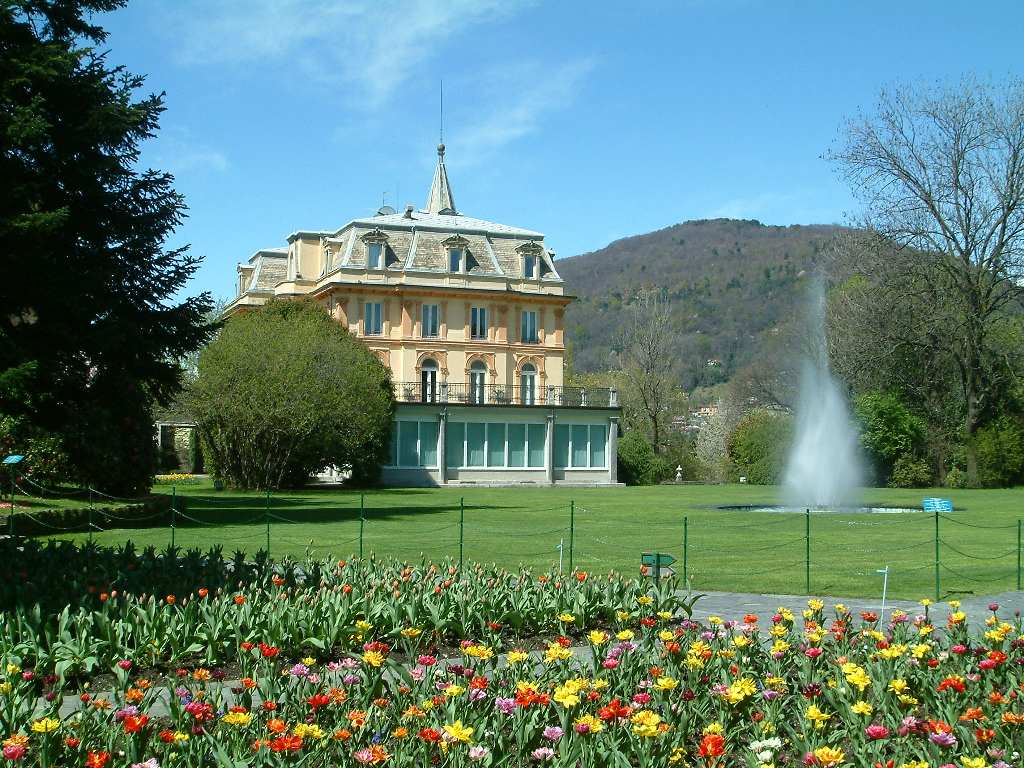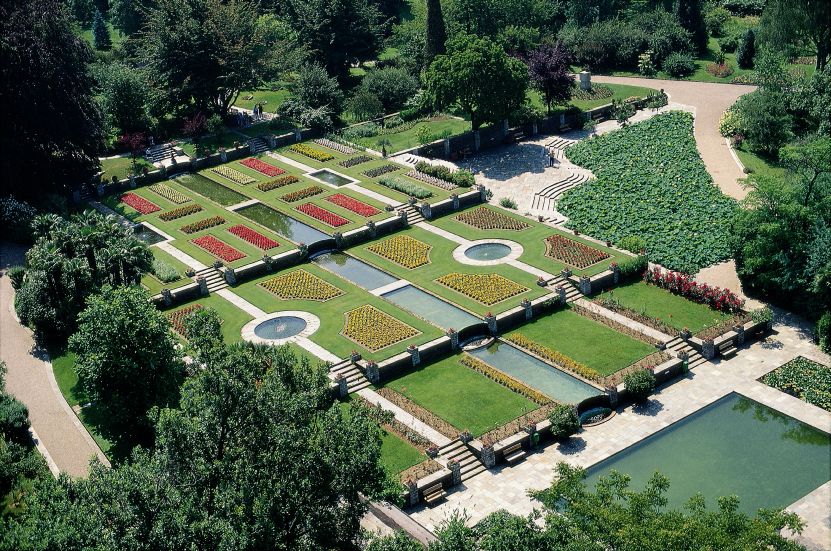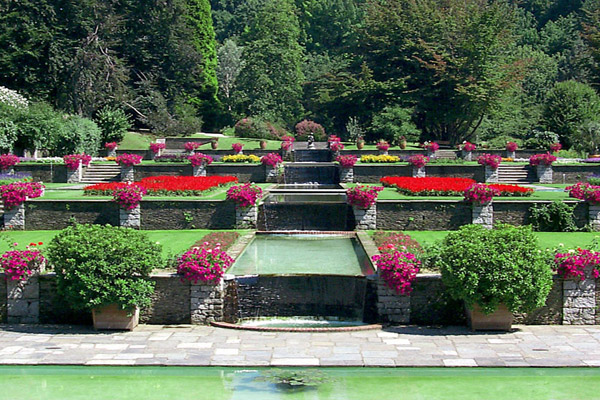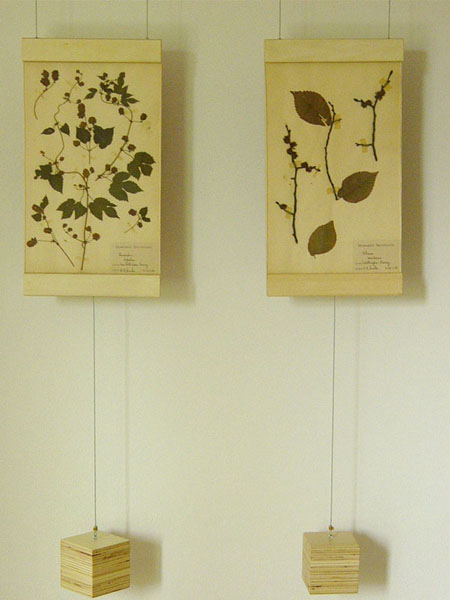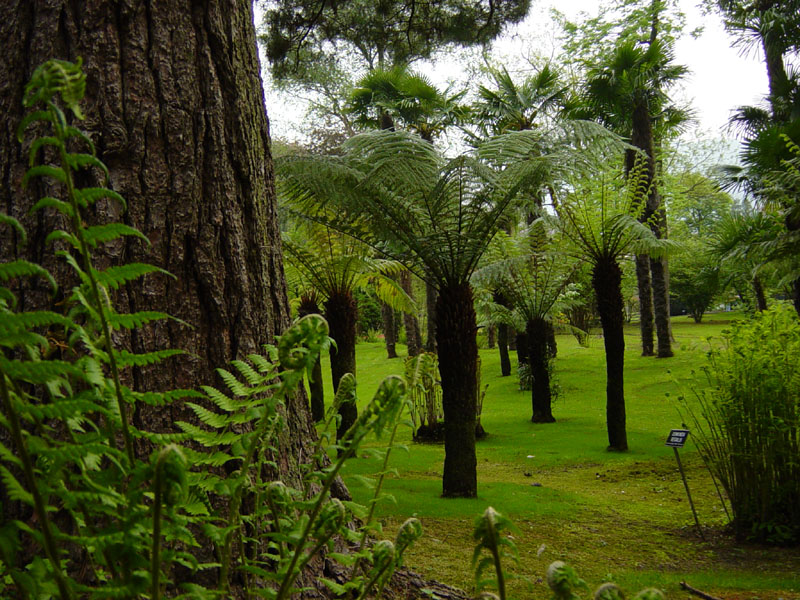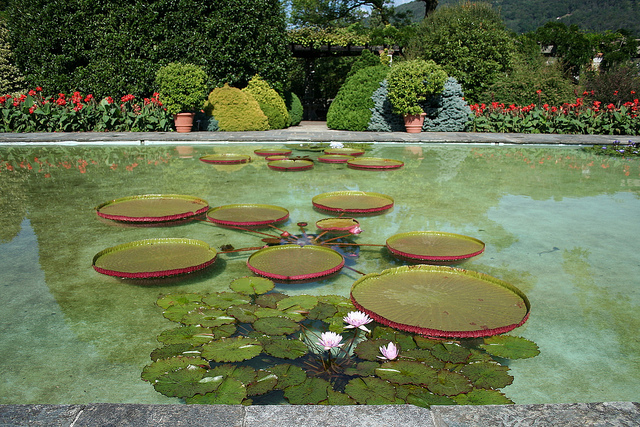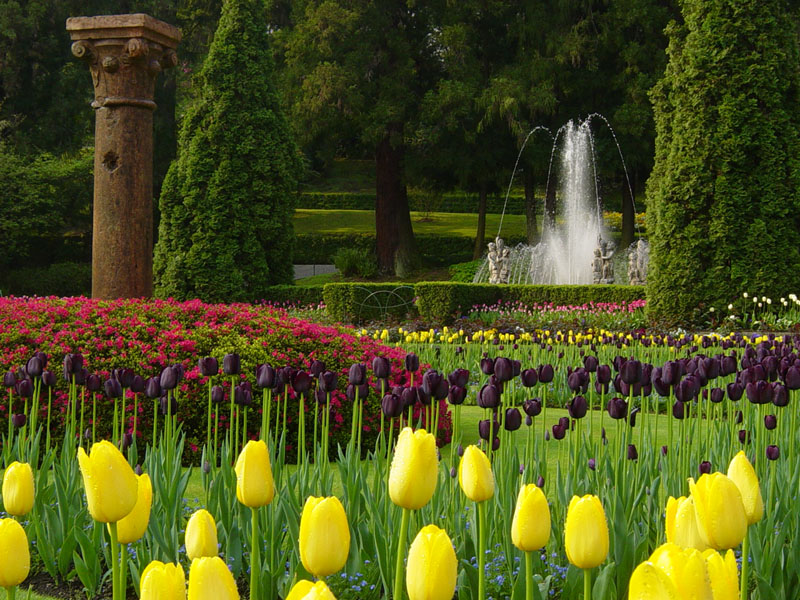
Villa Taranto Botanical Gardens
This post is also available in:
 Italiano (Italian)
Italiano (Italian)
The Gardens of Villa Taranto are on the Castagnola promontory, along the road that connects Pallanza to Intra, on the western shore of Lake Maggiore.
Neil Mc Eacharn (1184-1964), a captain of Scottish origin and a great lover of botany and Italy, built these beautiful gardens despite many problems and setbacks. In 1928, Mc Eacharn travelled to Italy looking for some land suitable for the construction of a large garden, but he could not find any. In 1930, after having published an advertisement in The Times, he found and purchased “La Crocetta” estate and its villa, built in 1880 by Count d’Orsetti with architect Augusto Guidini (the former author of Villa Scagliola) – the villa features the typical Normandy architecture and was in need of proper restoration when the new owner acquired it.
The surrounding park was smaller than the current one and mainly made of chestnut trees, locust trees and bamboo. Captain Mc Eacharn, who had already gained some remarkable experience in the botanical field (working in the vast park of his Galloway Castle in Scotland), immediately renamed the vast property as “Villa Taranto”, in honour of his ancestor Mc Donald, appointed Duke of Taranto by Napoleon. Mc Eacharn thus invested all his competence, enthusiasm and a large part of his fortunes to this new acquisition.
The work took thirty years, involving more than 100 professionals. The surface of the gardens was almost doubled with the purchase of neighbouring properties; the present vegetation was largely uprooted; a water system was created with water pumped from the lake and distributed to the gardens through a 5-mile network of pipes. Moreover, an artificial valley was dug for crops that needed a protected and shady climate, while terraced gardens were designed with the optimal exposure to the sun. Last but not least, more than 4 miles of avenues were created across the park.
Finally, countless botanical species were planted, which led Captain Mc Eacharn to travel around the world several times to find seeds and plants, as well as stimulate gardeners and flower growers in the area to cultivate species hitherto unknown.
The importance of the gardens is not only given by their botanical heritage, albeit very rich but also by their comprehensive harmony, in which the English imprint is enriched by the inclusion of typical elements of the Italian garden.
The gardens, donated by Captain Mc Eacharn to the Italian State, were opened to the public for the first time in 1952. When he died in 1964, he was buried in a chapel, specifically built in the centre of the gardens. The “Ente Giardini botanici di Villa Taranto” organization was thus established to properly manage the beautiful park.
Today, the gardens are part of the “Grandi Giardini Italiani” circuit; the villa is not open to the public and since 1996, is has housed the Prefecture of Verbano Cusio Ossola.
The gardens today
The Gardens of Villa Taranto extend over 40 acres, with over 4 miles of avenues.
20.000 plants grow there, including 80.000 bulbous species blooming in the spring months; there are also more than 150.000 ground covering plants, as well as some collections of trees and shrubs from all over the world, some of which are unique in Europe and eventually well acclimatized.
Among the most significant spots in the park, there are the “Valletta”, built in 1935 and surmounted by a bridge with a single arch, the large “terraced gardens”, where waterfalls and water games alternate with flower beds of annual plants: right there, there’s the bronze statue of the Fisherman, by Vincenzo Gemito from Naples. Then, there is the “Winter Garden”, with a greenhouse for Mediterranean plants and an impressive one dedicated to tropical and subtropical plants (including Victoria cruziana, the huge equatorial water lily, whose seeds arrived at Villa Taranto in 1956 from the Stockholm botanical garden).
Not to mention the lotus flower basin (Nelumbo nucifera), the “Labyrinth of dahlias” (with over 1.500 plants belonging to some350 varieties and 30.000 recently planted rape hyacinths), and “The Captain’s Herbarium”, located in a building next to the entrance.
In August 2013, the gardens were severely damaged by a tornado, which uprooted nearly 800 plants and damaged the greenhouses, which were then rebuilt: the resulting new space made it possible to plant new collections.
Among the countless precious species in the gardens, some are worth of a special mention:
– two specimens of Metasequoia glyptostroboides, deciduous conifers described only according to fossil records up to 1941, donated by Prince Borromeo to Captain Mc Eacharn as early as 1949 and 1950;
– the tree ferns (Dicksonia antarctica), planted with 30 specimens;
– the handkerchief tree (Davidia involucrata), a Chinese species planted in 1938 by the Spanish infant Don Jaime in the “Meadow of Personalities”, which has now assumed a size and a bearing that make it spectacular all year round;
–Emmenopterys henryi, a tree belonging to the same family of coffee and gardenia (Rubiaceae), originating from the temperate forests of China and successfully introduced in Europe in 1907; it was planted here in 1947 and it bloomed for the first time in Europe in July 1971.
Flowering calendar:
March: Acacia spp., daphnes, camellias, heathers, forsythia, Prunus spp., Magnolias, violets, rape hyacinths, crocuses.
April: Acacia spp., daphnes, camellias, heather, forsythia, Prunus spp., magnolias, rhododendrons, viburnums, Wisteria spp., along with anemones, crocuses, lilies of the valley, daffodils, tulips, and violets.
May: Aesculus ippocastanum, azaleas, Caesalpina sepiaria, Cornus florida rubra, Kalmia latifolia, Liriodendron tulipifera, Pawlonia spp., Styrax spp., Syringa spp., silver ragworts, plantain lilies, and tulips.
June: oranges and lemons, Callistemon spp., Ceanothus spp., Cornus kousa, lavender and lilies, Melia azedarach, Nelumbo nucifera, Nerium oleander, Nymphaea spp., Spiraea spp., Victoria cruziana.
July: aster, bellflower, dianthus, dahlia, lobelias, petunias, purslanes, Canna indica, gardenias, hibiscus, Nerium oleander, Nelumbo nucifera, Nymphaea spp., Victoria cruziana.
August: aster, Canna indica, Heliantus spp., gladiolus, petunias, zinnias, Hydrangea petiolaris
September-October: Nelumbo nucifera, Nymphaea spp., Victoria cruziana, Enkiantus campanulatus, erica, Hydrangea petiolaris and H. macrophylla, Lagerstroemia indica, Liquidambar styraciflua, Camellia sansanqua, aster, dahlia, zinnias, as well as berry shrubs including Callicarpa, Berberis, and Cotoneaster spp.
This post is also available in:
 Italiano (Italian)
Italiano (Italian)
Contatti
Via Vittorio Veneto, 111 - Verbania(VB)
0323 556667
entevillataranto@tin.it
Altre info
Adulti 10,00 euro; ragazzi (6-14) 5,50 euro; gruppi (20-100 persone) 7,50 euro; gruppi oltre 100 persone 6,00 euro; scuole (e genitori accompagnatori) 4,50 euro; gratuito bambini (0-6), Capo Comitiva, portatori di handicap (100%) e accompagnatore.
Tutto l'anno
8.30-18.30; ottobre e novembre 9.00-16.00

